“Art is the lie that enables us to realize the truth.”
— Pablo Picasso
Welcome to Philosophical Canvas, the artistic section of Philosophize Direct, where art becomes a vehicle for deep philosophical exploration. Created specifically for high school students, this vibrant space is your platform to transform abstract ideas into tangible works of art. Whether you’re crafting a clever meme that distills a complex concept, capturing a thought-provoking photograph that questions reality, painting a vivid scene that illustrates a moral dilemma, writing a poignant poem that delves into the human experience, or penning a compelling story that challenges societal norms, Philosophical Canvas invites you to bring philosophy to life in your own unique way.
Here, you’re not just studying philosophy—you’re living it, illustrating it, and sharing it with a community that values the intersection of deep thinking and artistic expression. This is your opportunity to transform abstract ideas into tangible works of art that resonate with others.
Why Philosophy for High School Students?
Philosophy is more than just an academic subject; it’s a way of thinking that sharpens our understanding of the world and ourselves. For high school students, engaging with philosophical ideas can be a transformative experience, fostering critical thinking, ethical reflection, and a deeper appreciation for the complexities of life.
Connecting Art and Philosophy for Innovative Expression
Art and philosophy are intrinsically linked—both strive to explore, question, and interpret the human experience. By merging these disciplines, Philosophical Canvas provides a unique space where students can express their philosophical insights through art. Whether it’s grappling with the concept of justice, the nature of existence, or the complexities of morality, art has the power to communicate these profound ideas in ways that transcend traditional discourse.
Your Opportunity to Contribute
As part of Philosophize Direct, Philosophical Canvas invites high school students to submit their creative works that embody philosophical themes. It is the perfect platform to share your insights, inspire others, and contribute to a growing dialogue that connects art and philosophy in meaningful ways. We’re excited to see your ideas come to life and to witness the powerful impact they can have on others. Submit your work and be part of a journal that celebrates the intersection of deep thinking and artistic expression.
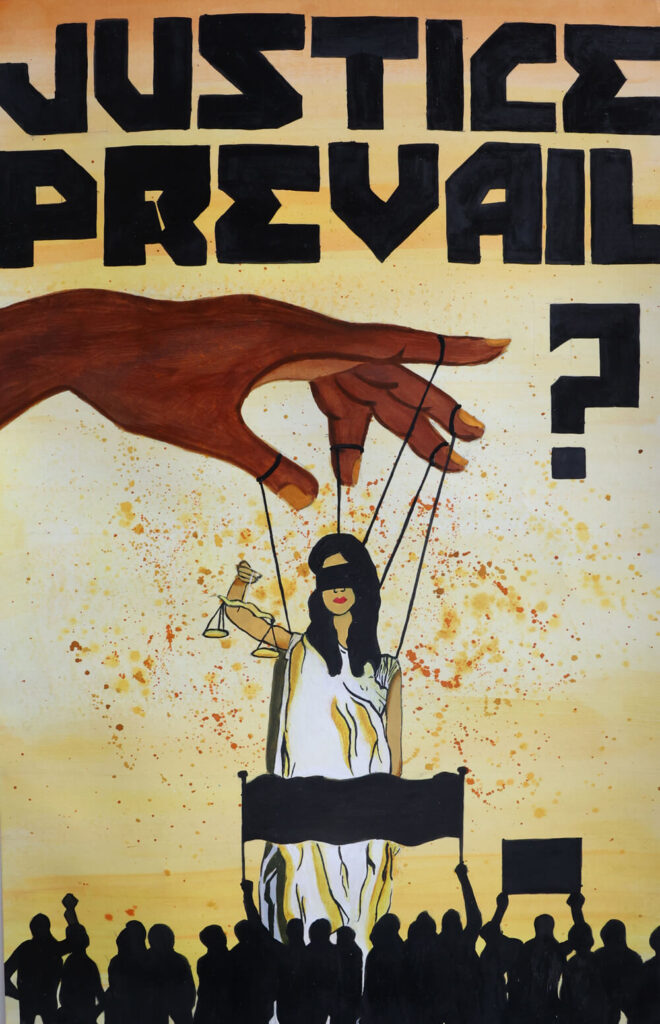
Archa Aji
Social justice is the presence of a fair and equitable society where everyone has access to the same rights, opportunities, and resources, regardless of their background. Despite progress in recent decades, women continue to face significant challenges, including gender-based violence, limited access to education and healthcare, and economic disparities. Social justice for women encompasses a range of initiatives and movements aimed at achieving equality and addressing the systemic injustices that women face. In essence, social justice for women is not only a moral imperative but also essential for creating a fair and thriving society for all.
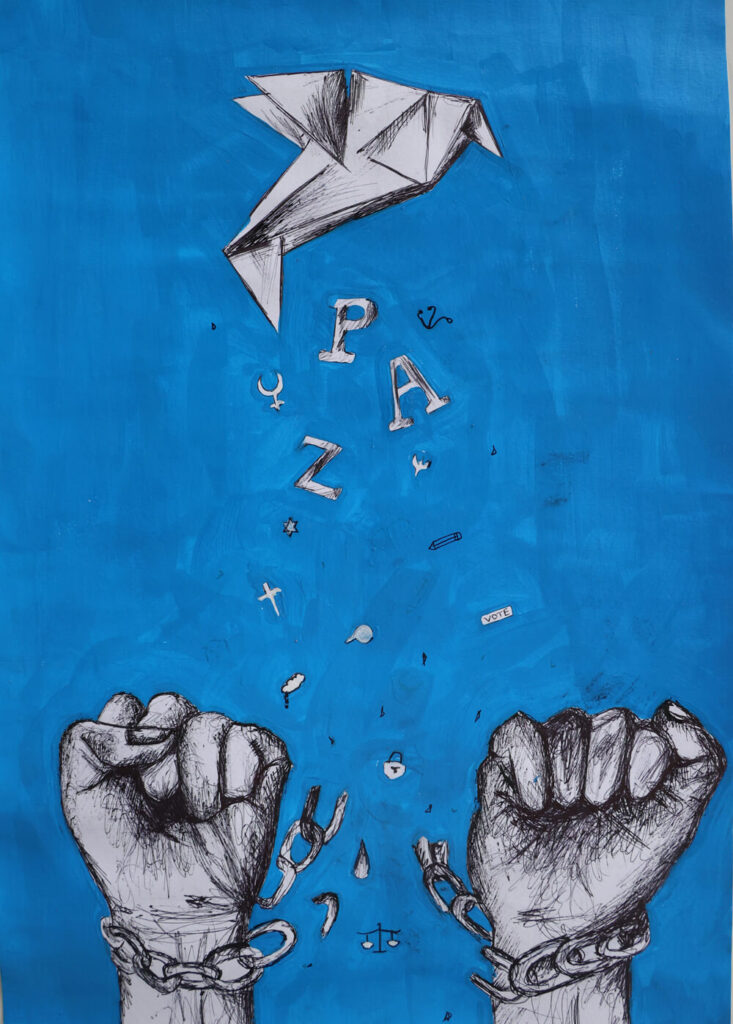
Diva Jain
This artwork depicts a powerful symbolism of justice:
A broken chain lies shattered at the base, representing freedom from oppression.
A bird, symbolizing liberty, soars upwards, spreading its wings.
A hand, once bound by the chain, now rises triumphantly; the background radiates warm, golden light, signifying hope and equality.
The chain remnants bear the words “Justice” and “Freedom.” This poignant visual representation embodies the essence of justice: liberation, empowerment, and the pursuit of equality and human rights.
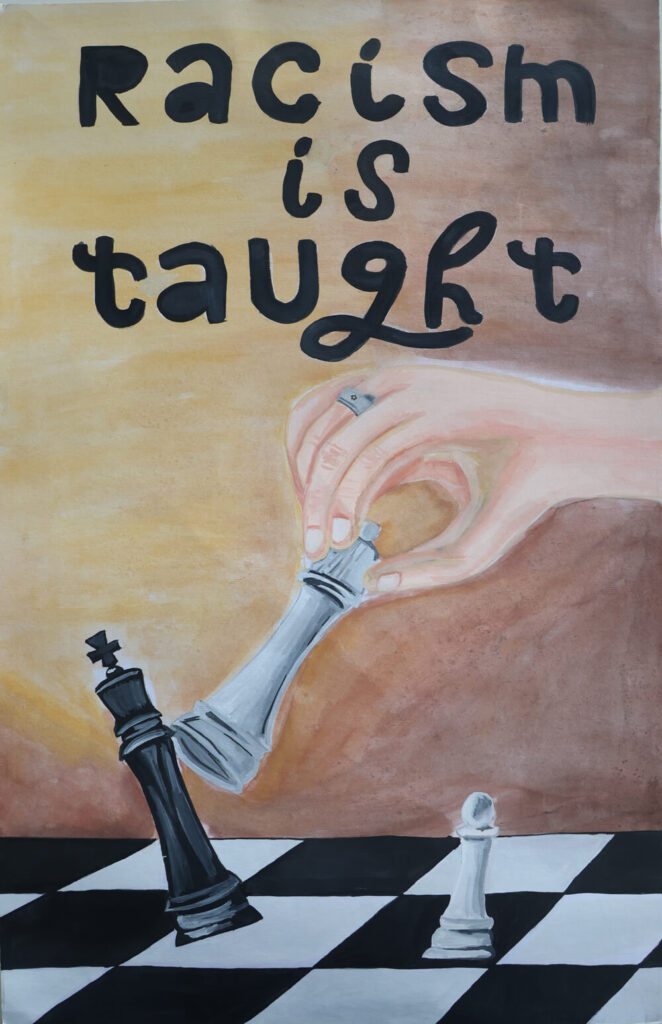
Titiksha Jain
In this poster, it shows racial discrimination by people. One black chess piece and two white chess pieces symbolize the imbalance of racial dynamics and white dominance. The disproportionate representation visually expresses the unequal power structures that have favored whiteness over blackness for centuries. The white piece defeating the black piece symbolizes marginalization and oppression. This visual invites reflection on systemic racism and the need for justice.
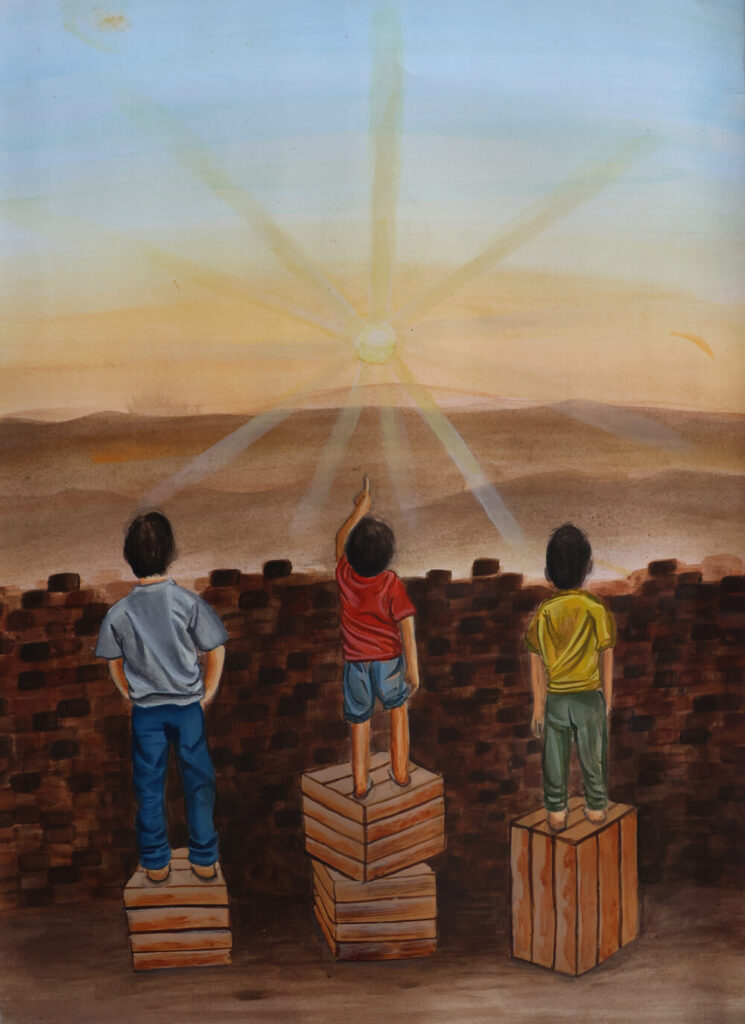
Kirtika Soni
Justice is a concept deeply rooted in fairness, equality, and moral righteousness. It promotes fairness by ensuring that all individuals receive according to their needs, regardless of their background, identity, or circumstances. In the painting, the boxes symbolize the support needed to achieve opportunity. The sunlight represents the bright future. It shows that justice can be provided if individuals are given the support they are due, allowing them to move towards a brighter future.
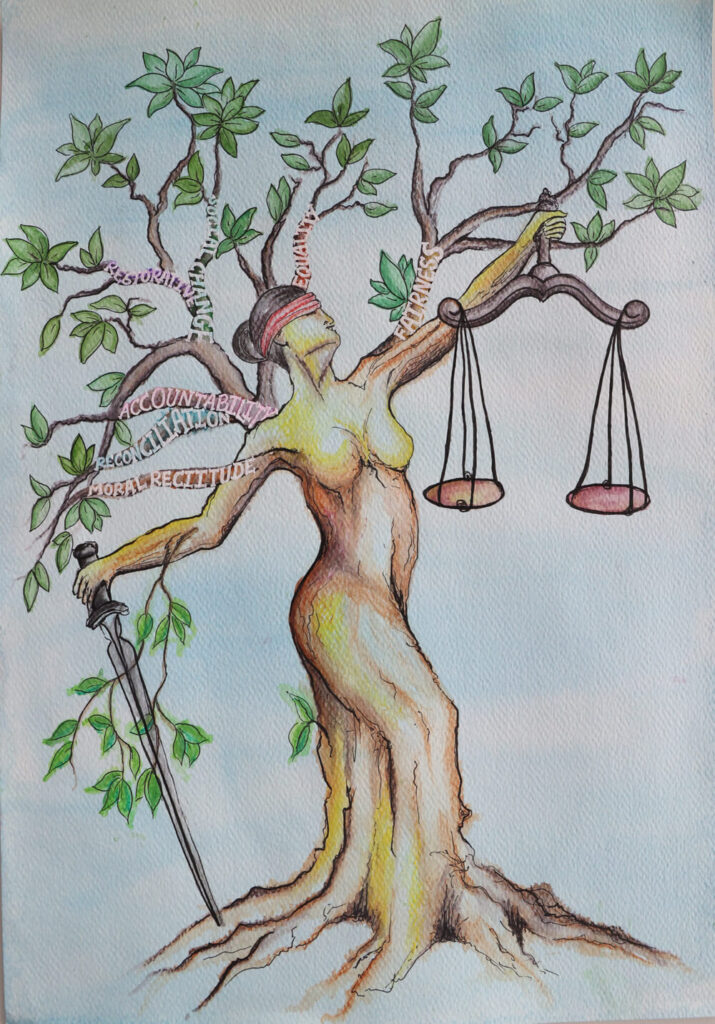
Manushree Bothra
Justice is a complex and multifaceted concept that can have different meanings depending on individual perspectives, cultural backgrounds, and societal contexts. My artwork depicts a powerful and symbolic representation of justice, embodied by a woman transformed into a majestic tree. The sturdy trunk and sprawling branches evoke strength, resilience, and harmony, while the leaves and foliage represent growth, renewal, and the interconnectedness of humanity. Prominently positioned on one branch, two weighing scales symbolize the delicate balance of justice. Through this artwork, I aim to inspire reflection, spark dialogue, and encourage action toward creating a world where justice, equality, and compassion thrive.
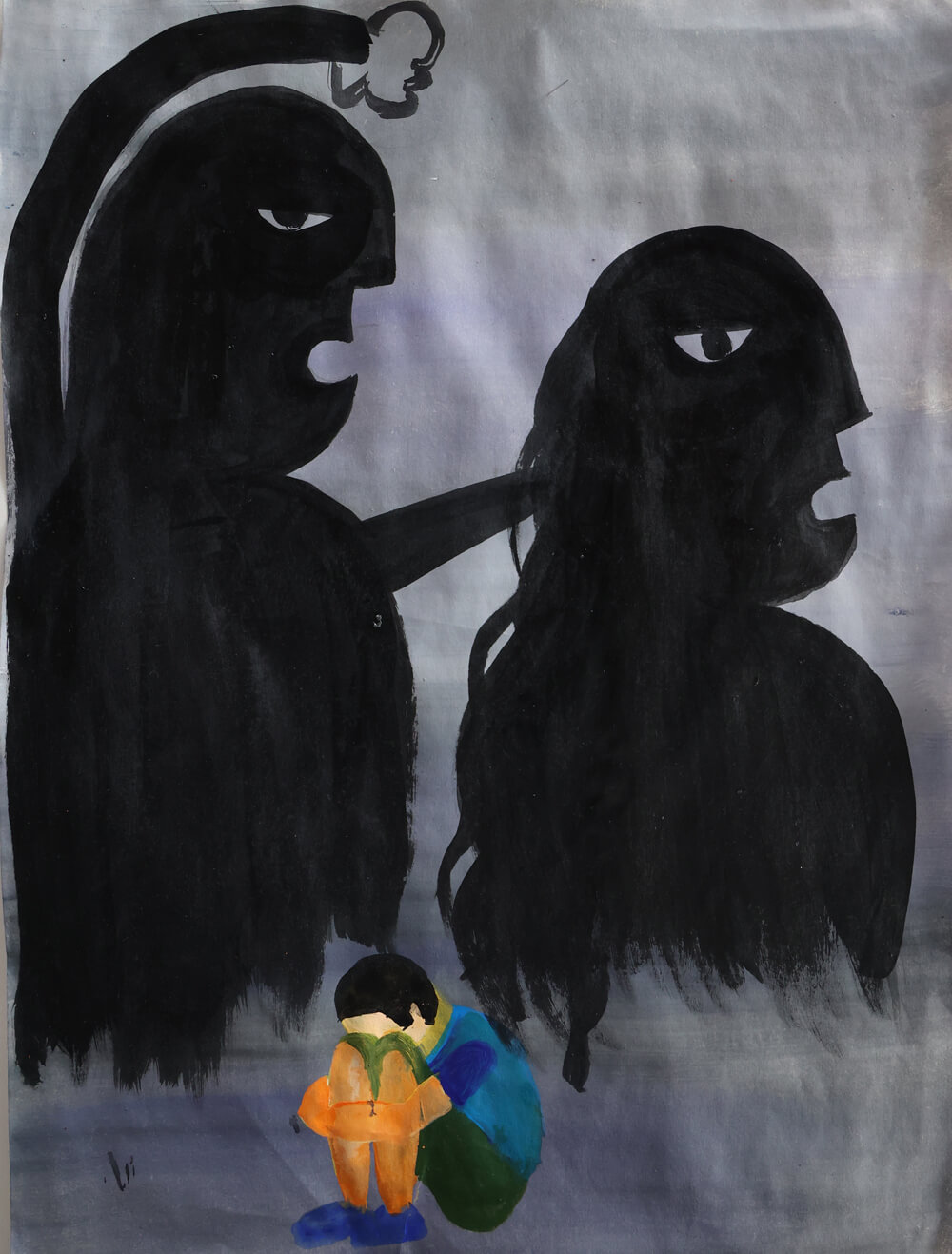
Naomi badhra
In situations of domestic violence, such as when a child experiences depression due to a parent’s abusive behavior towards the other parent, justice involves holding the abusive parent accountable for their actions through legal means. Providing immediate safety for the child and the victimized parent is paramount. Justice, in this regard, represents the ability for the family to live without fear of further abuse. Justice must also consider the psychological impact of domestic violence on children. Access to counseling services and psychological support for the child and the affected parent is essential for recovery and healing. Justice can be viewed as facilitating the emotional recovery process for all involved, allowing them to regain stability and resilience.
Justice also includes a broader societal responsibility to raise awareness and change the cultural narratives surrounding domestic violence. This involves challenging stigmas, providing resources, and advocating for policies that protect and support victims while holding perpetrators accountable.
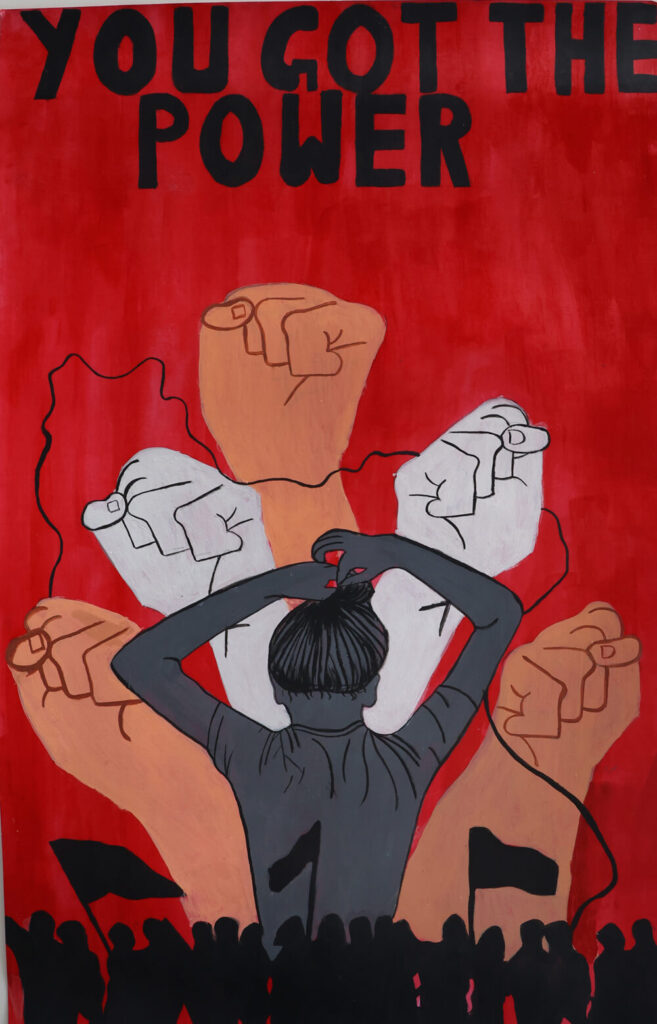
Navya Sanghi
Women empowerment extends beyond the scope of feminism, although feminism is a crucial aspect of it. It involves creating conditions where women have equal opportunities and are supported in achieving their full potential. Empowerment encompasses access to education, healthcare, and economic resources, as well as the ability to make autonomous decisions and participate actively in political and social spheres. It also includes addressing barriers and cultural biases that limit women’s choices and opportunities. Ultimately, women empowerment aims to build a more equitable society where every woman has equal opportunities. It is a fundamental aspect of achieving gender equality and social progress.
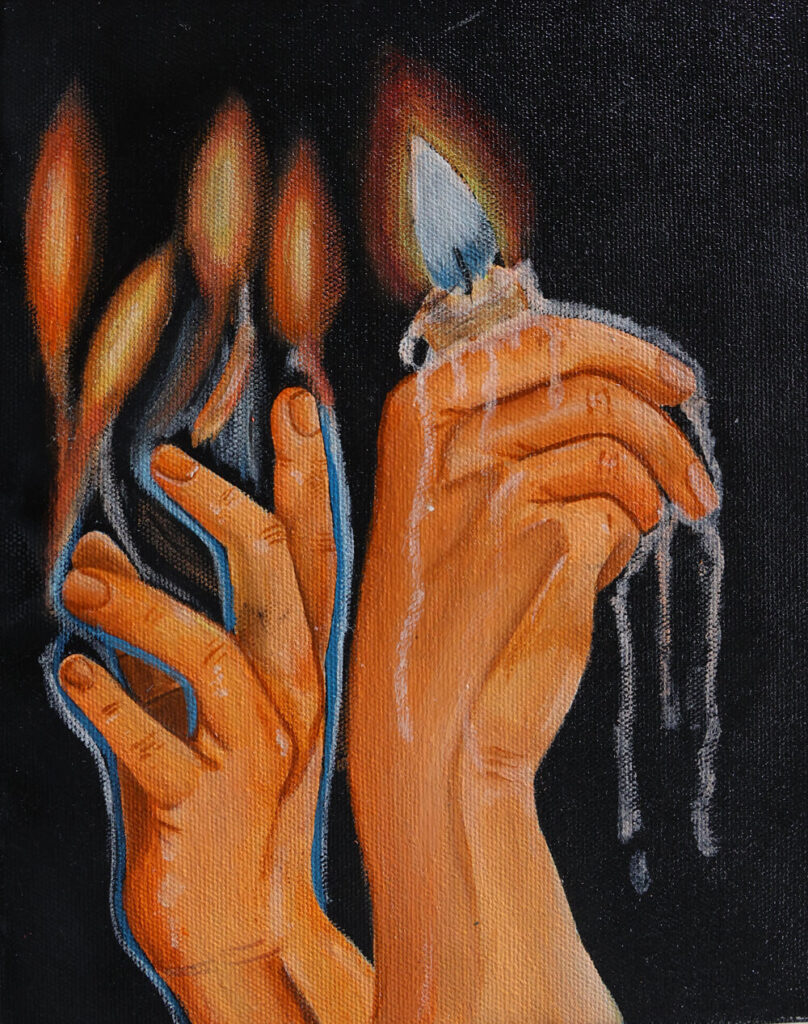
Riddhika Poddar
The image of hands holding a candle symbolizes the pursuit of justice. The flame represents truth, guiding humanity through the darkness of injustice. The melting wax of the candle suggests the sacrifices often required to uphold fairness and equality. The outstretched hand may represent a plea for justice or assistance, emphasizing the collective struggle. Together, these elements highlight the fragility yet importance of maintaining justice, even when it requires personal or societal costs. The vibrant flames suggest hope, underscoring that justice is a powerful, illuminating force, even in the most challenging circumstances.
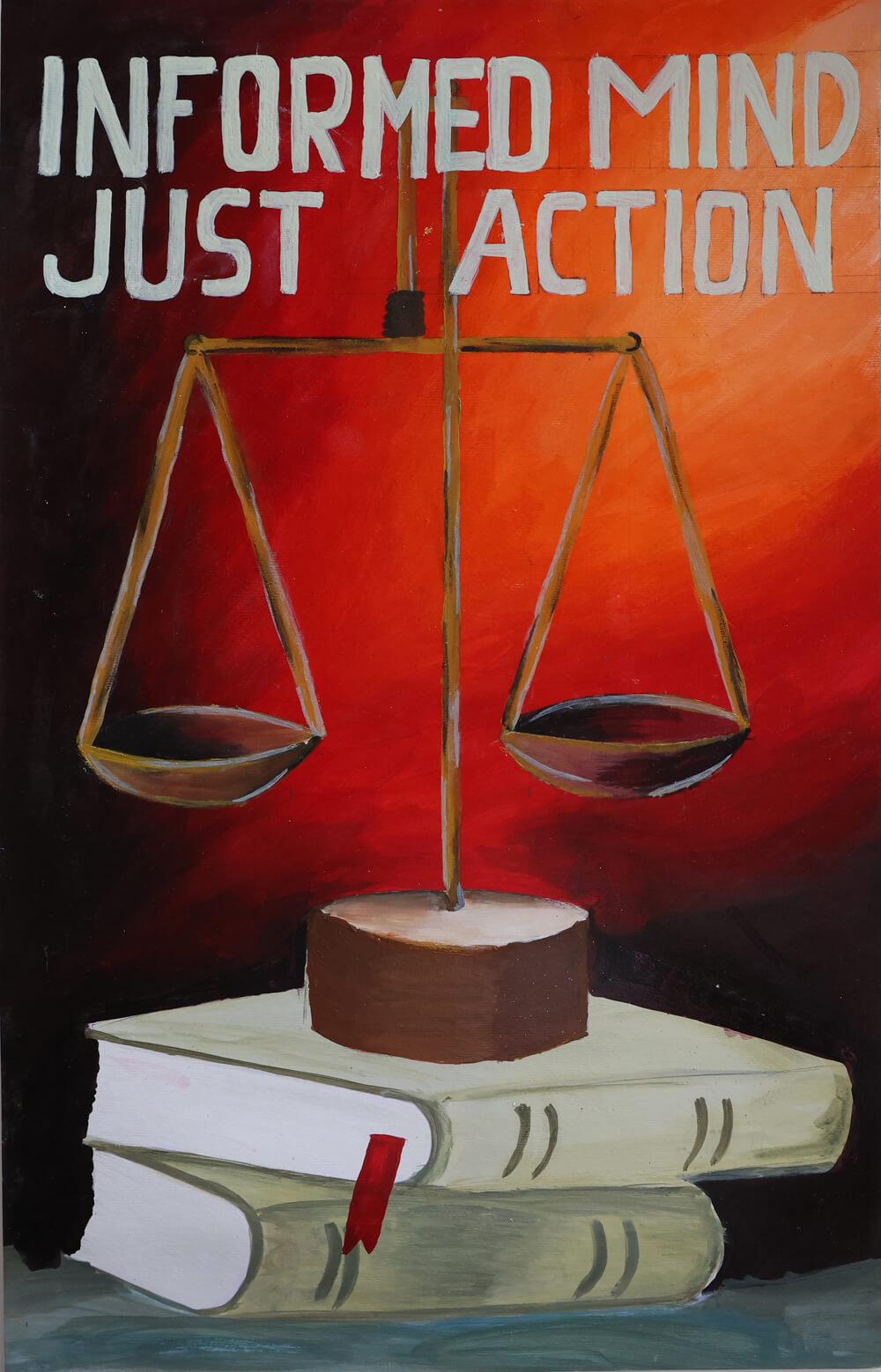
Ritwika Singh
Justice is a complex term, and its comprehension requires a deep sense of knowledge and judgment. Through my painting, I try to reflect the impact education has on our understanding of justice. The scales are a symbol of justice, and their poor condition represents the state of justice in our society. The books balancing the scales depict how education can elevate our perception of justice. The change of background from dark to light shows how proper education can imbue us with a sense of right and wrong, thereby enhancing our judgment. Overall, the painting points out the need for proper education for all, as it is said, ‘Informed minds lead to just actions.’
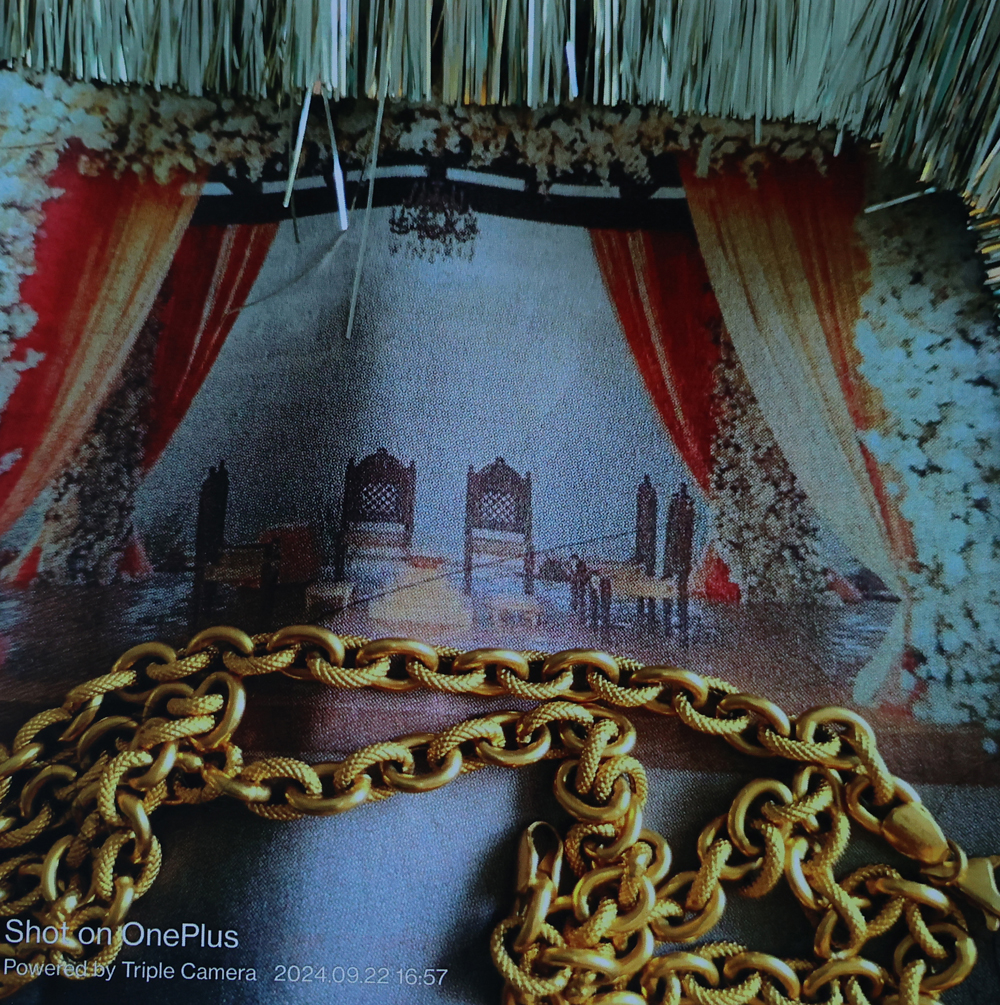
Vrinda Chaturvedi
This photograph represents that marriage is not a deal for dowry or a chain of gold; the true justice is the glitter of love.
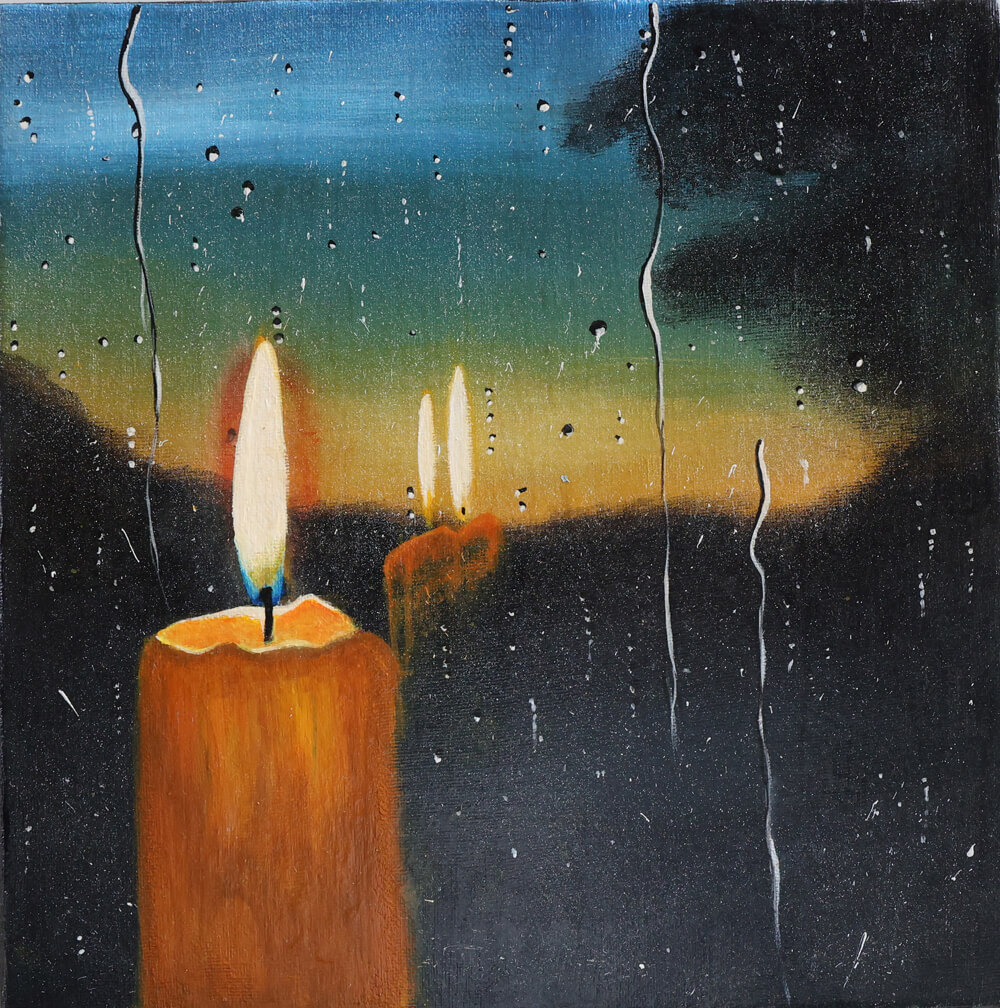
Gargi Sharma
This painting represents “Justice” as a balance between light and darkness. The candle, glowing steadily in the dark, stands for truth, hope, and fairness. Its reflection in the glass adds complexity, showing that justice often involves seeing things from different perspectives. The melting wax reminds us that justice is fragile and needs care, just like the flame that can flicker if ignored. Overall, the artwork reflects how justice lights the way but can be delicate and requires constant attention.
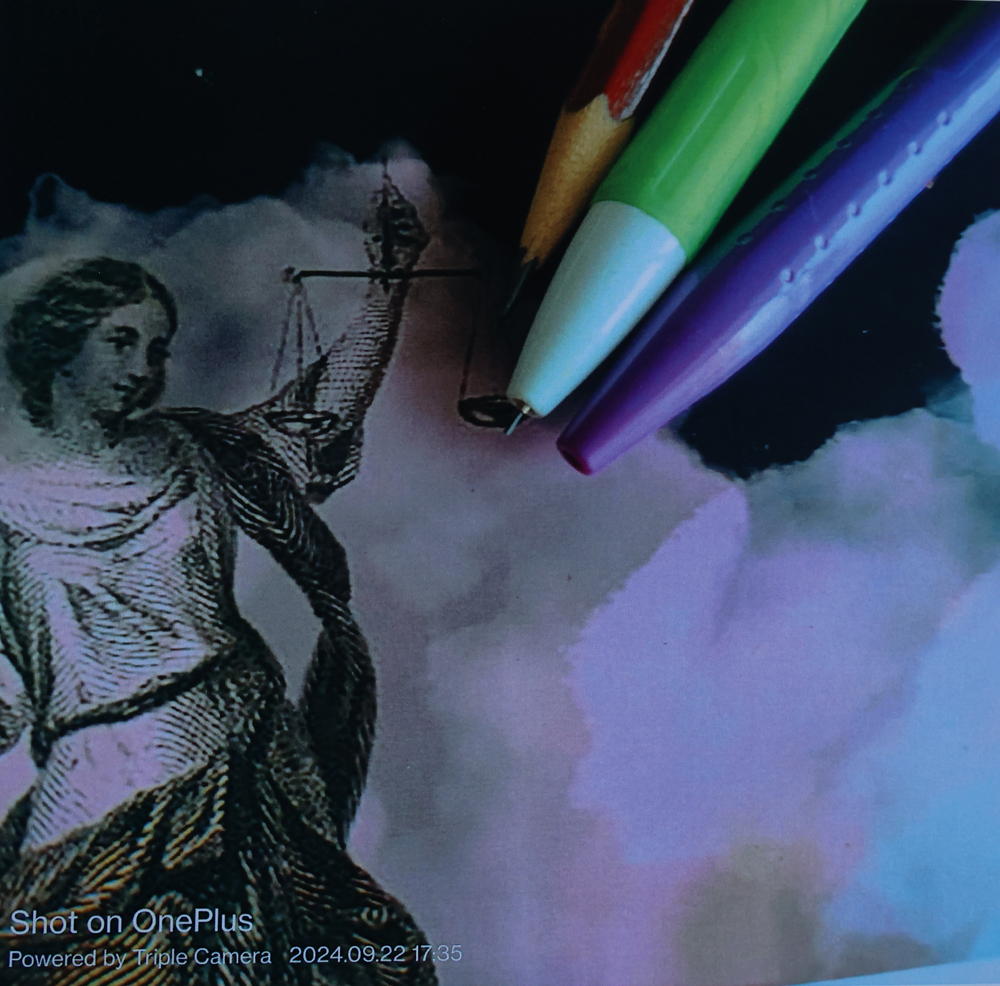
Mitul Pareek
This photograph represents how pencils, pens, and sketches can create justice through education. It creates the image of truth, justice, and enlightenment.
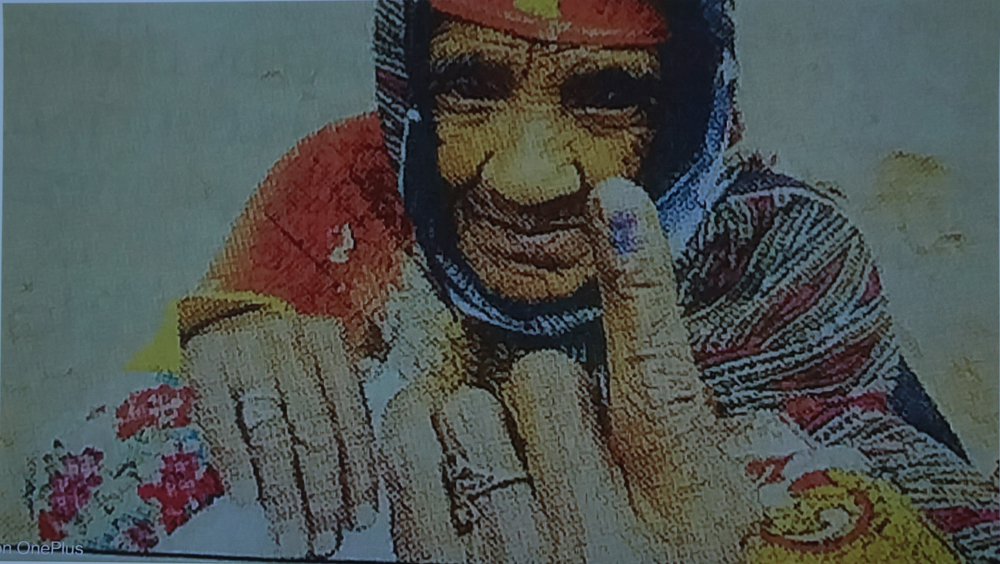
Aryan Sharma
This photograph represents justice for women, meaning a woman has the right to vote and select representatives.
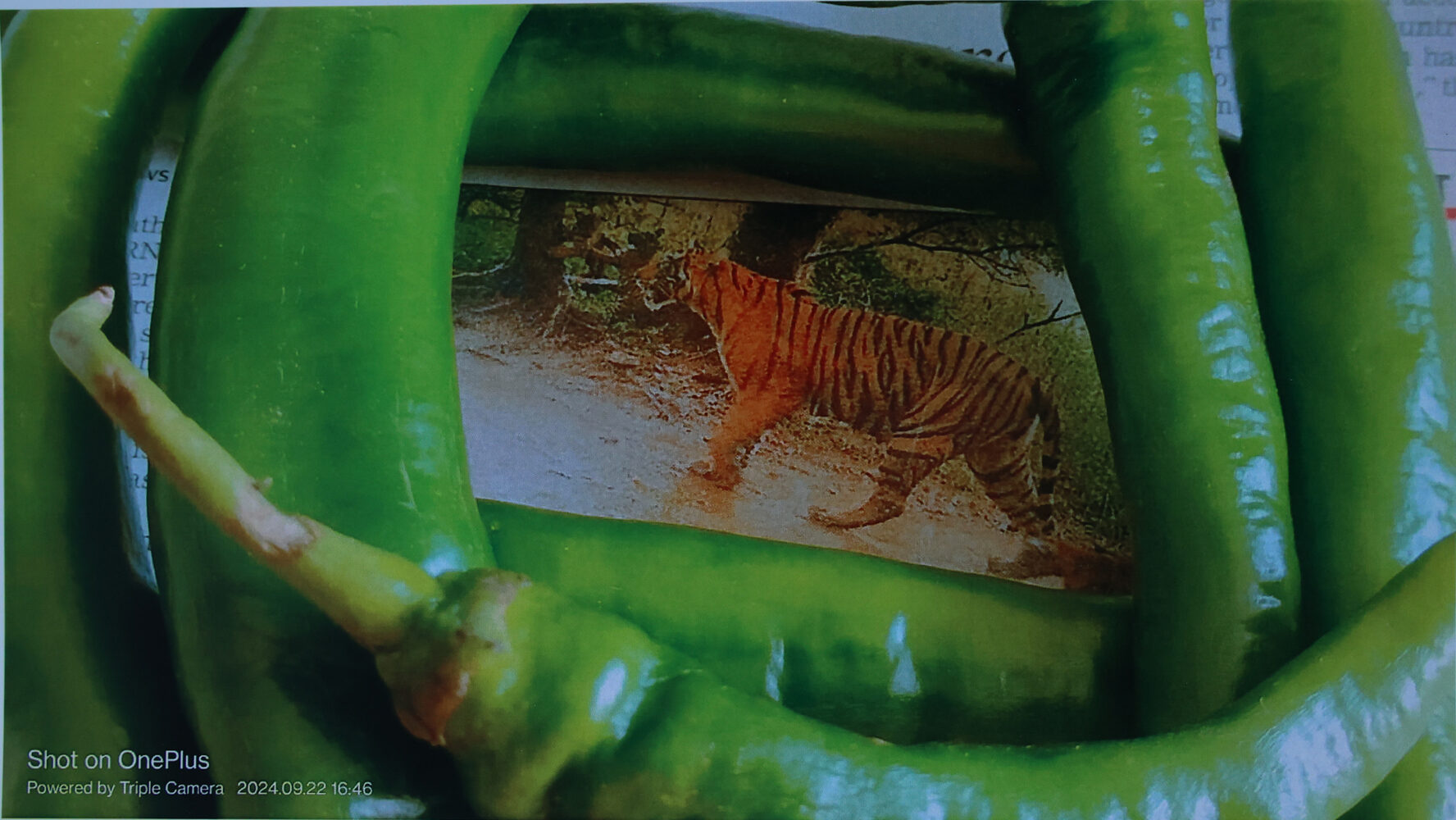
Deepthi Vyas
This photograph represents: “I want my habitat. You have given it, but your interference is still there. It’s like the chill of greenery. Justice, please.”
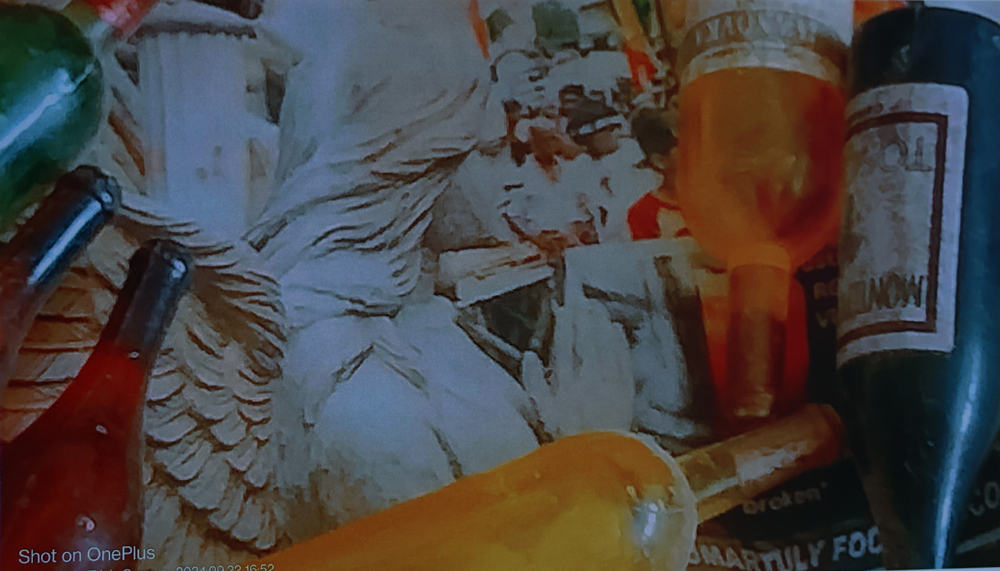
Nishita Fouzdar
This photograph represents: No liquor, please. It has spoiled many lives. Justice means life and happiness.
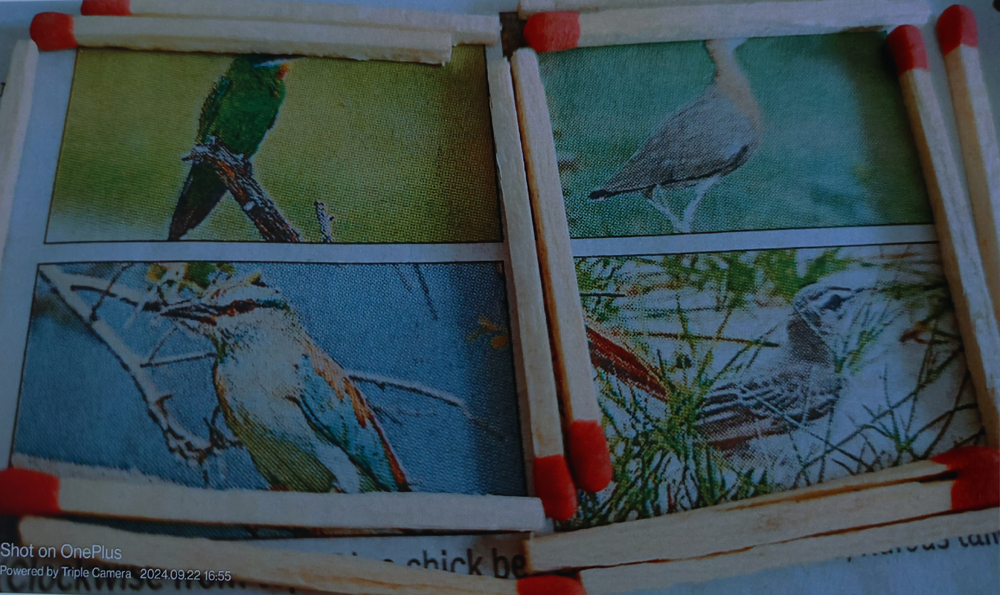
Riddhima Jain
This photograph, representing matchsticks framed in a bird’s picture, depicts putting everything in the context of unburnt sticks and nature.
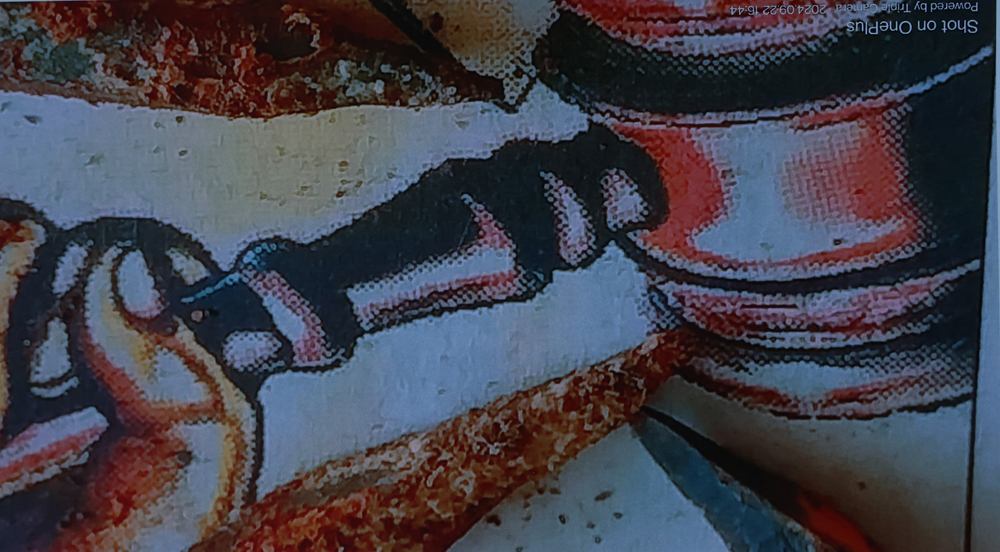
Vaaruni Sharma
This photograph represents the sound of the hammer, nailing on justice. The nail of iron will not stop me. Justice is power, it is the ultimate truth, and it will win.
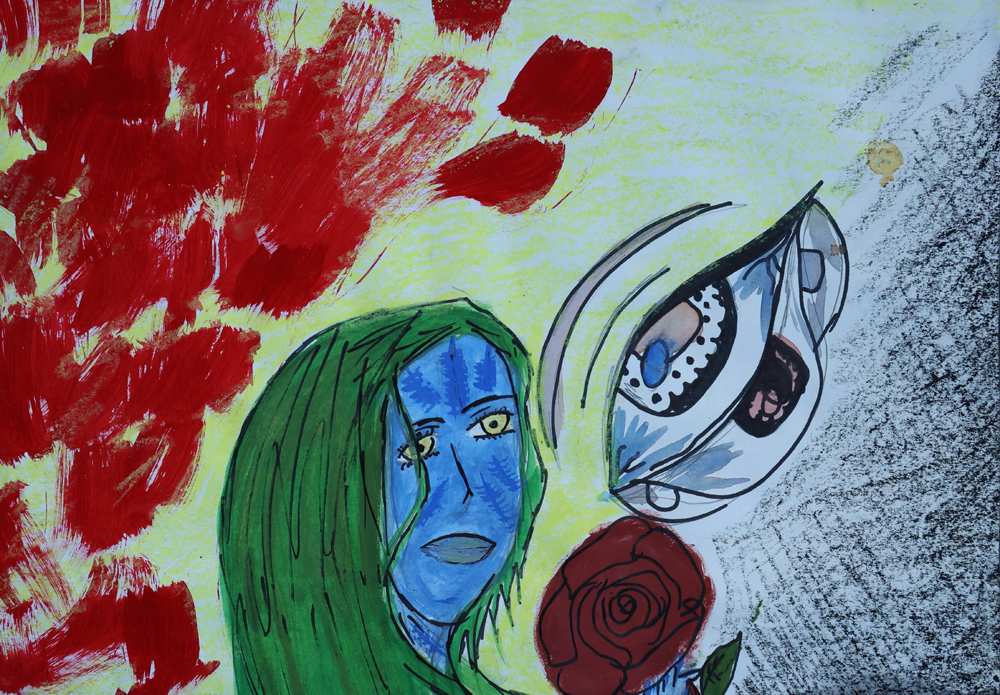
Janhavi Chhipa
This painting represents tears and sorrow like blood, and only justice can turn them into roses of happiness. That girl wants to say that girls are not safe in this world because bad people live here. I’m afraid to go out because many kidnappers and criminals are roaming around outside. I want to see a good world where everyone is as good as a flower. I want justice because I want girls not to find themselves in situations like mine.
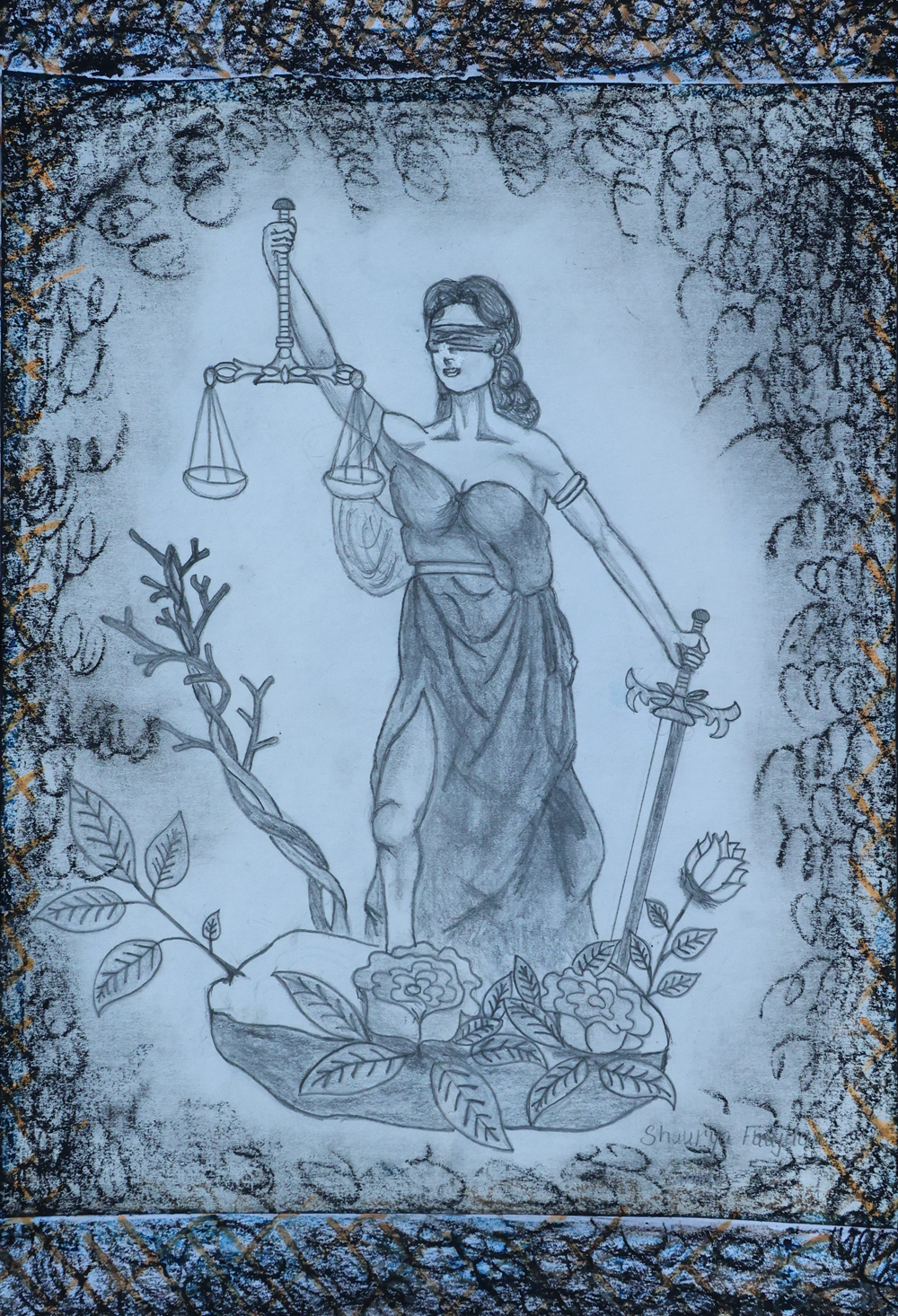
Shaurya Fouzdar
This painting represents justice as love, peace, and nature. It stands for doing what is right and good, and being true to ourselves.
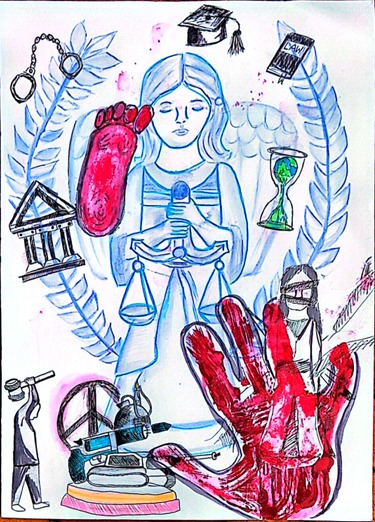
Aarsheya sharma
From wars that tragically claim the lives of civilians to the pressing issues of sexual violence and systemic inequality, JUSTICE is a theme that is both urgent and universal. In a world where the demand for justice is louder than ever,I have created this artwork depicting justice from war to bring peace and equality ignoring the race, caste, gender, color and religion of a person.
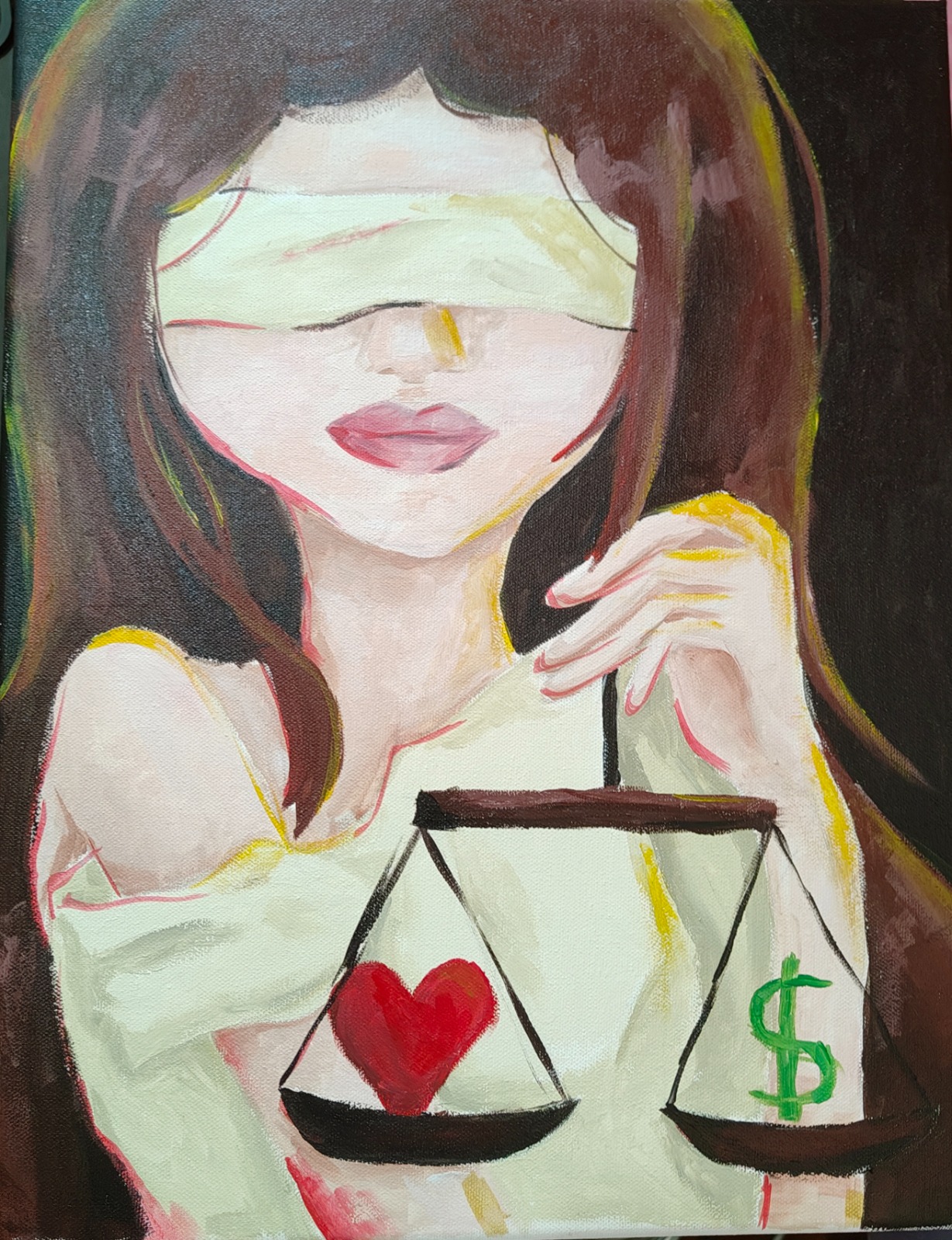
Yuxiao yang
This drawing talks about to goddess holding a scales. There is a heart and a money symbol on the scales, and the scales are balance. I think the real justice should be fair, the social position don’t matters.
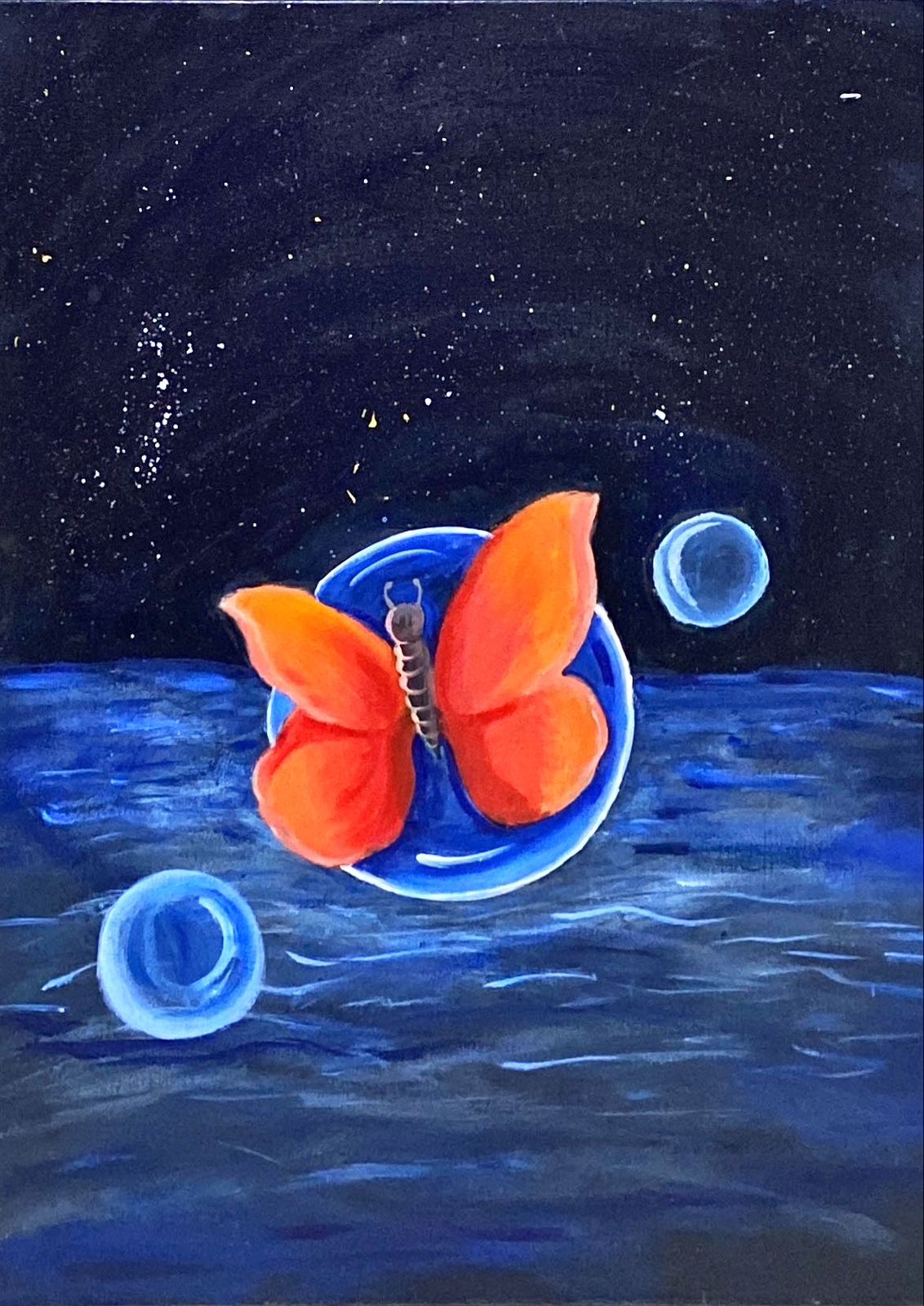
Danika Kataria
A butterfly escaping from a bubble symbolizes justice as it represents the win of freedom over confinement. The bubble, restrictive, signifies oppression or unfair constraints, while the butterfly embodies innocence and the natural right to freedom. When the butterfly breaks free, it reflects the idea of justice being served, allowing truth, fairness, and liberty to prevail over injustice. This imagery highlights the fragile yet powerful nature of justice, which can overcome barriers that seem Unconquerable, just as the delicate butterfly escapes its fragile prison.
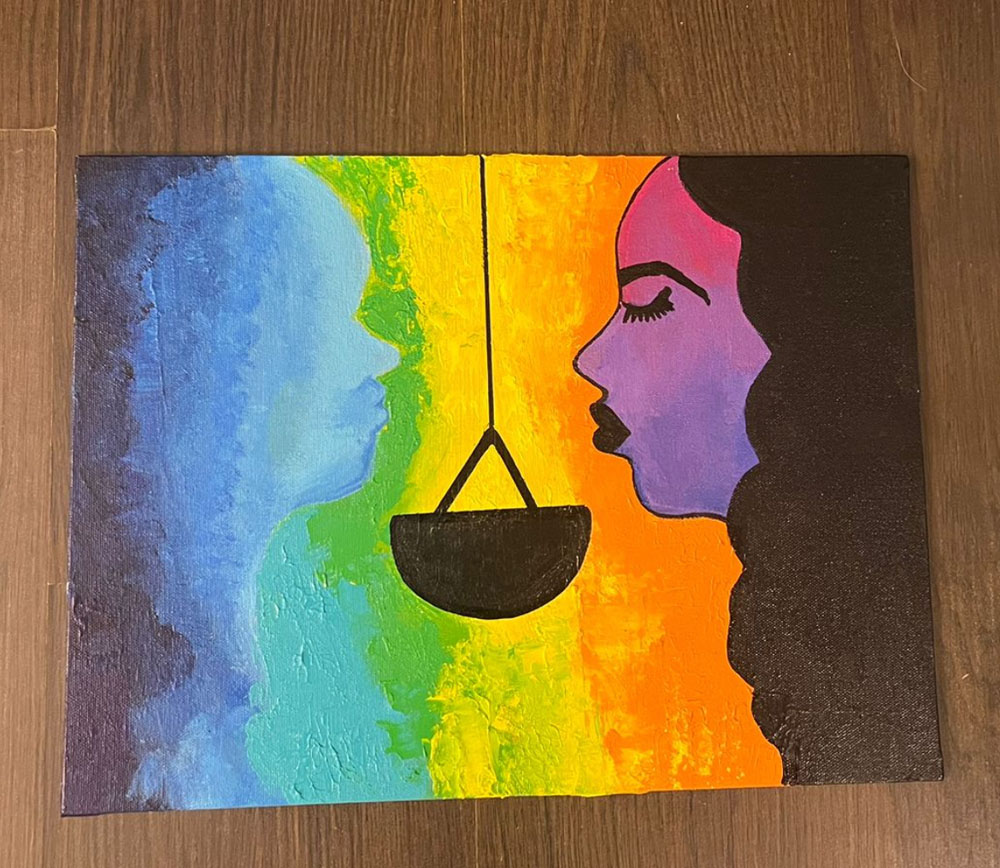
Shaira Lamba
As the topic was convey what justice means to you, this is what i have created. there are 2 people facing eachother, with a scale in the middle indicating justice. the women on the right has prominent features like a nose, lips, hair. but the person to the left has no features. this is because the person in blue is a reflection of the women. it has no identifiable features that could tell you the race, gender or identity. This can tell one that, justice sees everyone as equal with no discrimination. To me, justice is seeing everybody as equal, which is what i have tried to convey in the painting. The scale in the centre helps add the idea of justice and equality. the colours used are bright and prominent to create an impact, and draw the attention of the viewer. i have also used knife painting technique for the background to add texture.
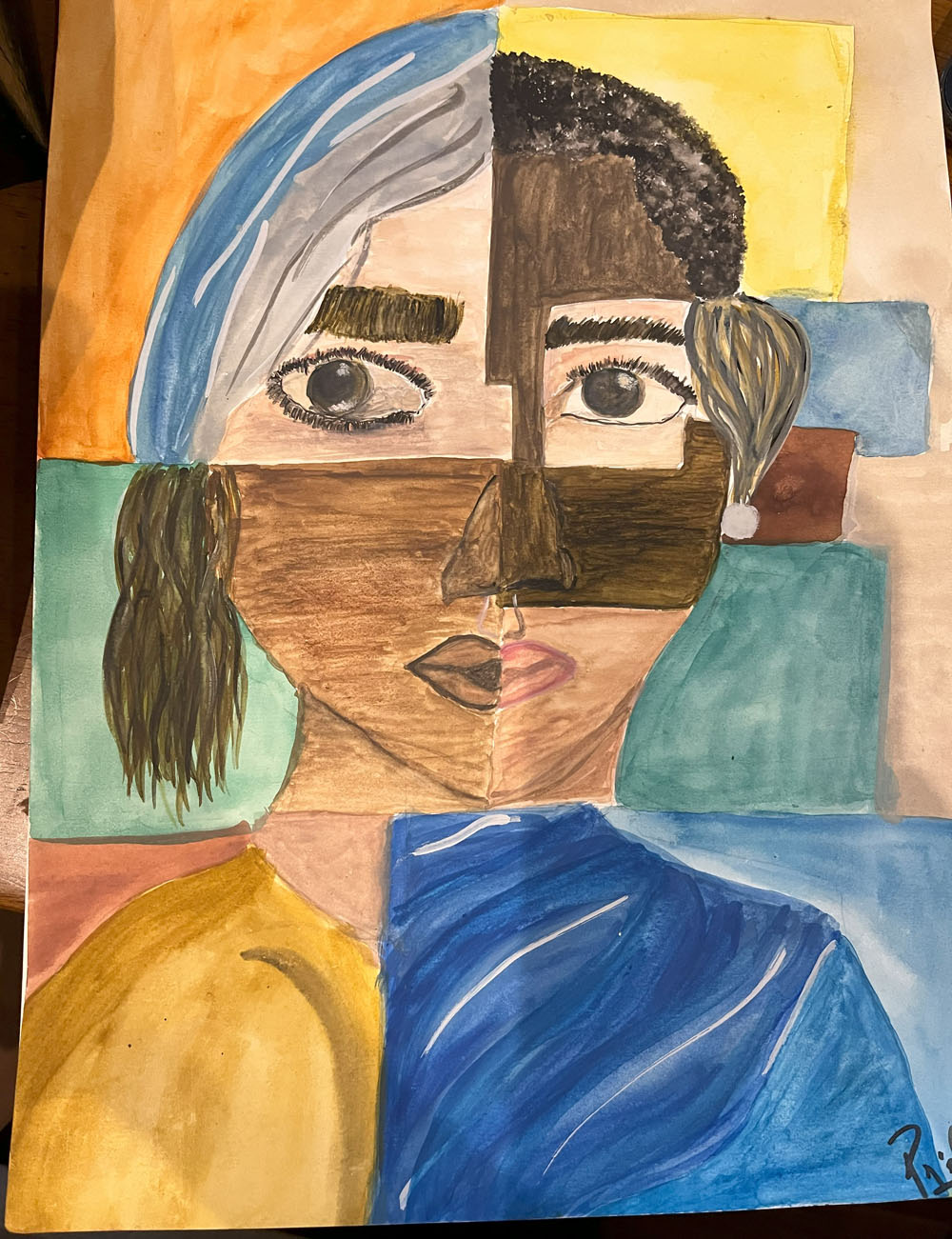
Prisha Modi
The artwork that i have created shows different faces- one face divided into different parts each colored in different colors to show diversity and beauty of different races. it represents racism. it symbolises the struggles that diverse identities within a system often face. the womans’ direct gaze define social expectations and a determination to overcome them and overcome racism.
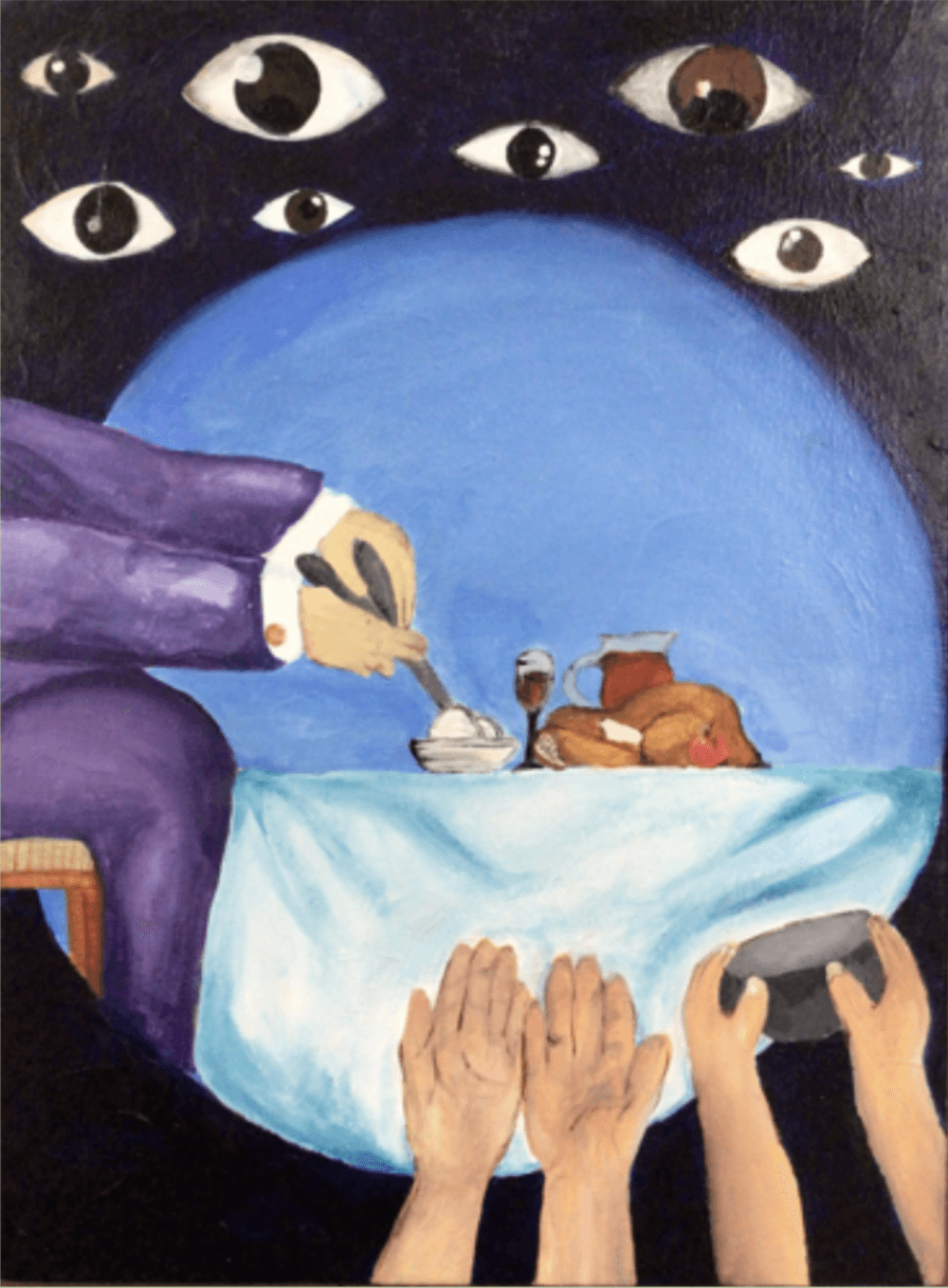
Suchita Agarwalla
‘A seat at the table’ depicts the omnipresence of wealth disparity and social inequality. The center of the painting shows a well-dressed figure, seated at a table with an abundant and necessary amount of food. It can be seen that the amount of food present on the table is more than enough for one person, and is most probably going to be wasted. This is contrasted with hungry hands reaching up from below, symbolizing the marginalized and impoverished who are left with nothing. The hands are of people in need, who are scrambling to fill their stomachs, but are left helpless. The painting also depicts a set of watchful eyes, which represent the gaze of society, witnessing the injustice but failing to act.
This painting depicts the unequal distribution of resources and holds the society accountable in addressing such disparities. Through the contrast between the privileged and underprivileged, the painting comments on the absence of economic and social justice.
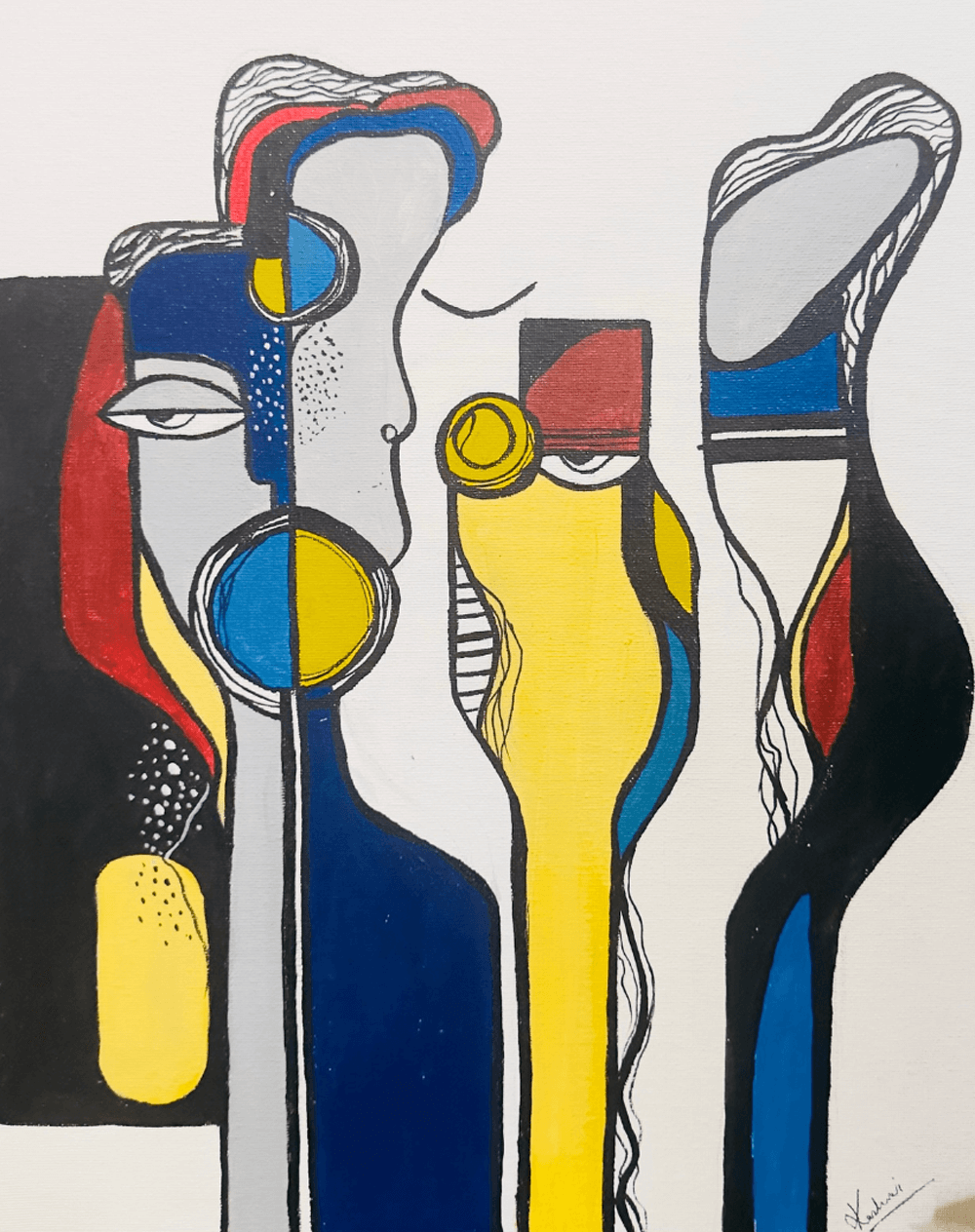
Kashvi Mehta
The artwork represents a visual metaphor used to portray the existential issues of true identity vs. that perceived within the structures of society. This piece of modern art depicts abstract and elongated stylized figures symbolizing over-emphasis on the physical appearance in the contemporary world. The forms overlap each other, illustrating the interconnectedness among individuals that is often fragmented into complexity. Through the intricate differences in all the forms, I intend to present the gender inequality faced in today’s era- and how these are differently perceived in society. The use of geometric elements, especially the circular figures represents the lenses- lenses through which we perceive ourselves vs. the world’s perceptions of identity. The bold and unique shades of colors don’t aesthetically compile into a palette- further highlighting the concept of individuality and embracing the uniqueness within individuals as well as the society at large.
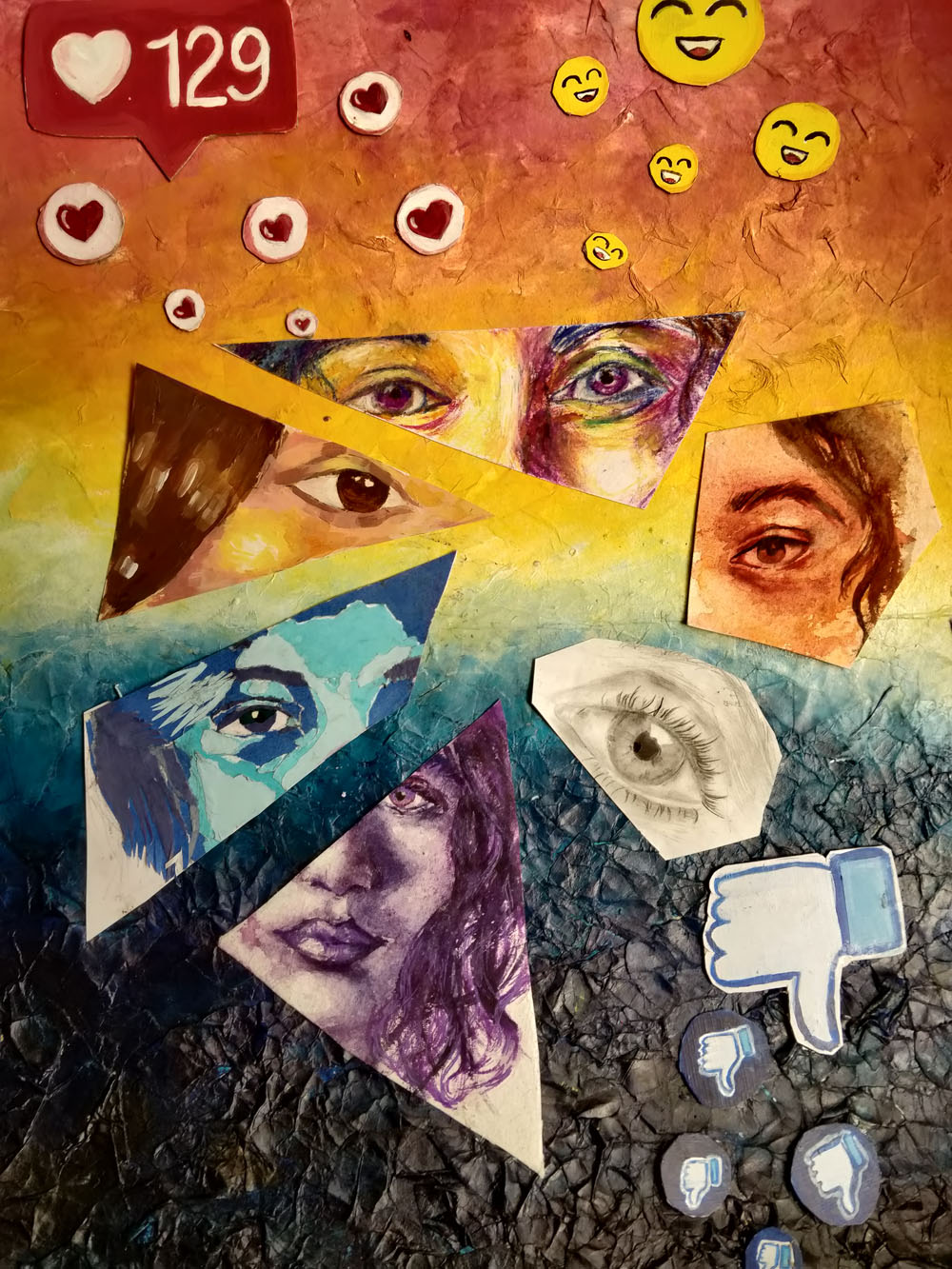
Khyati Lath
The Faceless Gaze of the Digital Age
My artwork delves into the theme of justice in the digital age, focusing on how people use multiple identities online to cyberbully and impose their own distorted versions of right and wrong. While this seems like a straightforward issue of using the anonymity that social media offers in order to express freely, it has many devious layers that are functional. I chose mixed media to express the complexity of this issue. The upper part of the piece is bathed in warm colors, representing the allure of likes, positive comments, and the superficial validation that social media offers. Beneath that, the darker tones symbolize the hidden negativity—dislikes, harsh criticism, and disapproval—that is expressed, which creates an emotional impact on the receiver.
In the center of the artwork, I placed different eyes, each crafted from various materials. These eyes represent how people adopt different personas on social media, hiding behind anonymity while they observe, judge, and attack others from a distance. The eyes reflect both the facelessness of online identities and the sense of detachment that comes with hiding behind a screen. The ambiguity around the injustice in this situation wherein the legal system allows people to get away with such behavior disturbs me. I stand for the victims of trolling and social media bullying and seek JUSTICE! My artwork is a cry for help and urges lawmakers to create a set of rules to govern online toxic behavior.
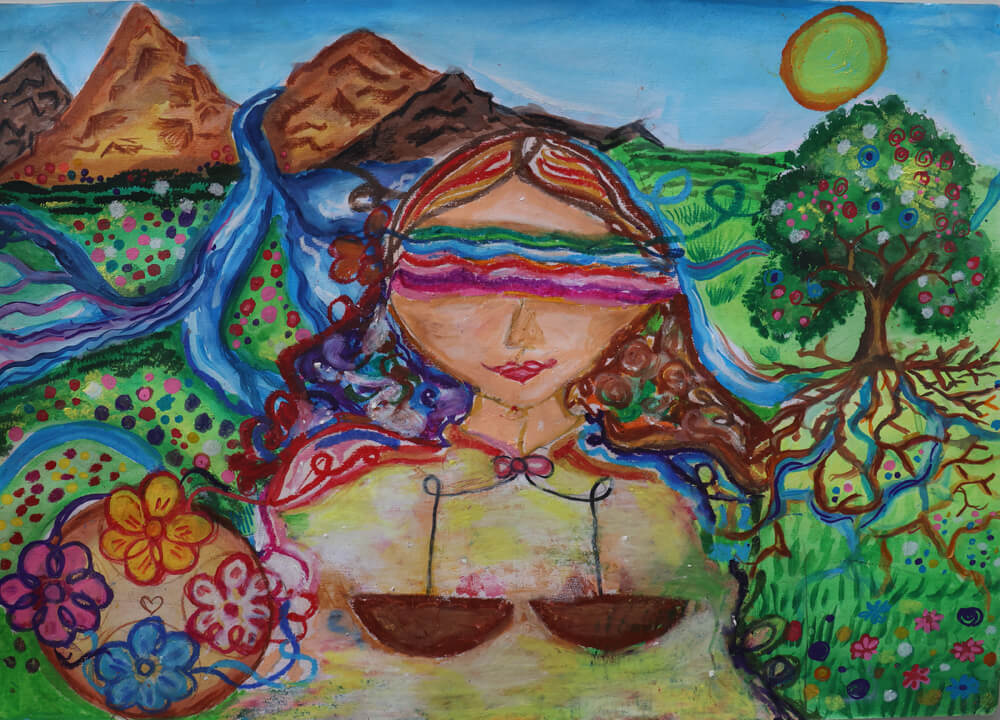
Shivanshi Srivastava
The mountains here represent the resolute nature of justice and how, even if delayed or wrong, it will eventually come to punish the wrongdoer and serve the bereaved party. It shows the strength and strictness of justice towards unjust people.
One can observe a river flowing out of this mountain range, symbolizing how both rigidity and fluidity interact dynamically to give rise to the concept of justice. If justice is too rigid, it will break under the weight of change, and if it is too fluid, it will lose its vitality and can be misused by greedy parties. Therefore, it is necessary to strike a balance between the two, where the basic principles of justice remain rigid, yet it is flexible enough to adapt to the ever-changing and modernizing society.
The wheel of blooming threads knits the allegory of justice in the form of a woman, together with nature, using:
- Blue threads of equality, reverie, rights, and respect.
- White threads of peace, purity, transparency, and truth.
- Purple threads of compassion, camaraderie, fraternity, science, law, human rights, and modernity.
- Yellow threads of hope, power, prosperity, and progress.
Along with these, blooms on the loom arise from nature, including water, mountains, and tree roots, all of which contribute to building the blindfold of the allegory of justice. This personified figure is blinded by the lines of threads covering her eyes, treating everyone as equal before the law, regardless of their caste, creed, gender, economic status, color, or language.
On her neck, she balances the weighing scale that symbolizes equality for all true causes.
Her white and yellow attire further complements her saintly yet adaptive nature.
Lastly, the blue sky depicted in the background expresses mankind’s observant nature and how it should learn from nature. It also shows that the blue sky cannot be concealed, no matter how many mountain ranges, trees, pillars, or vegetation one uses. Similarly, the nature of crime, threats, injustice, and lies will always emerge, no matter how hard one tries to conceal them.
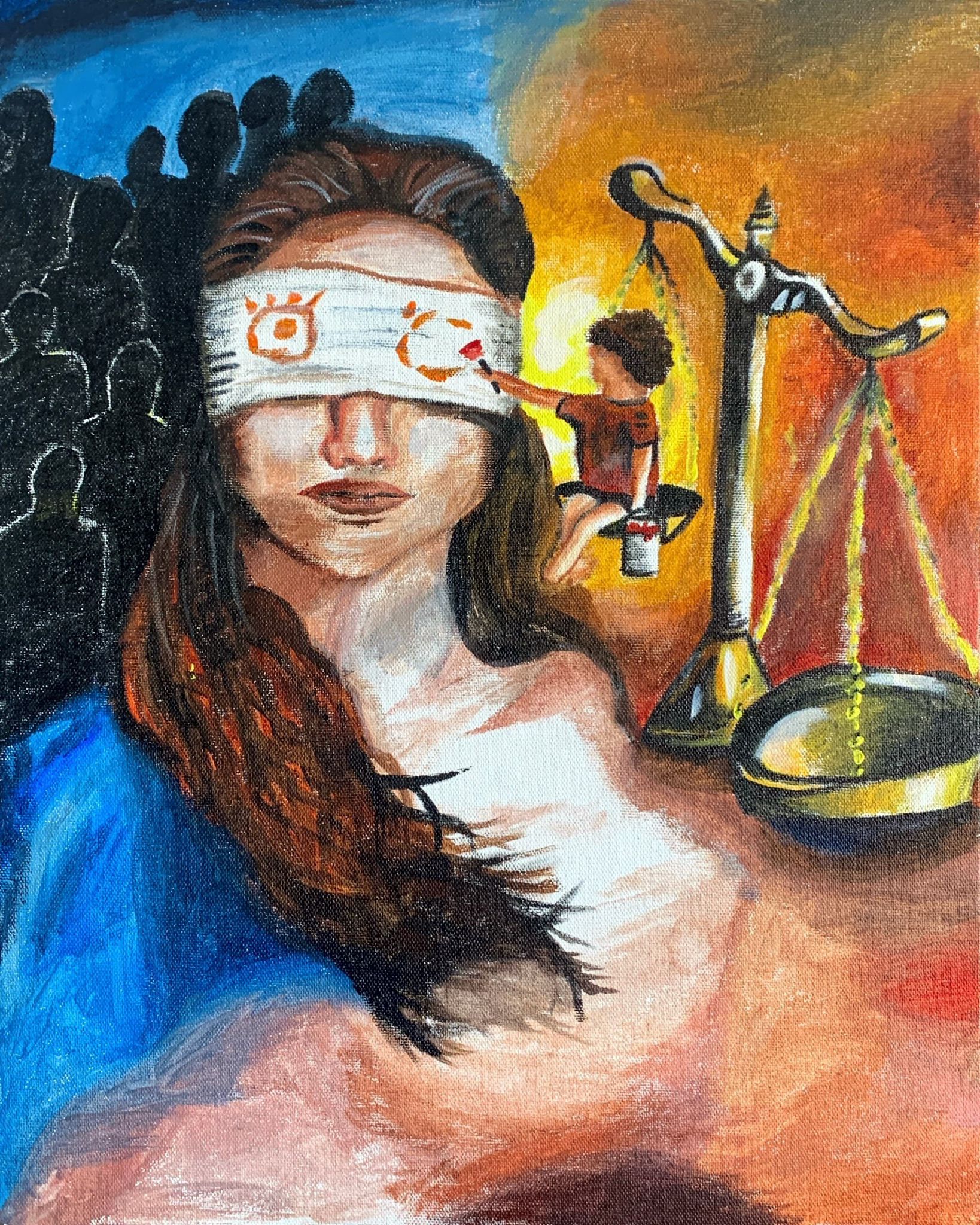
Abeer Nitin Chaudhary
The only thing worse than being blind is having sight but no vision. In fact, the law gives justice to the people who are completely blind in the country. Despite the population being in millions, justice can only help the people driven away from their vision, as shown in the painting.
